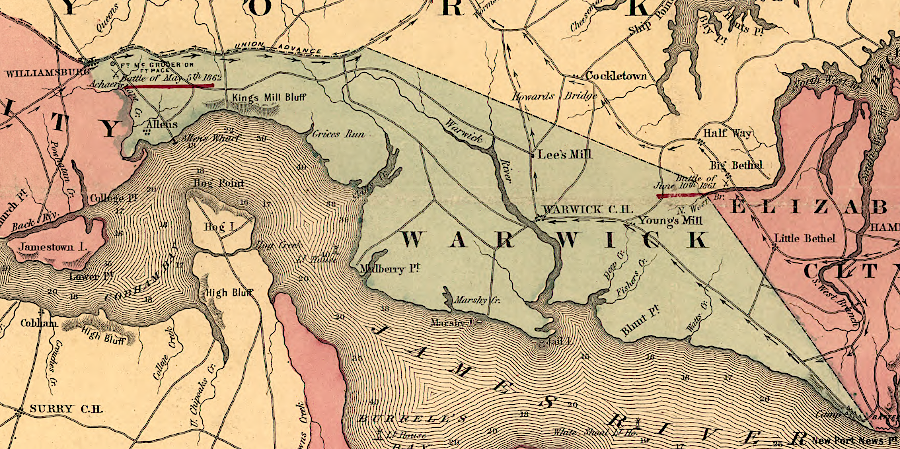
Warwick County in 1862
Source: Library of Congress, Hare's map of the vicinity of Richmond, and Peninsular campaign in Virginia (by J. Knowles Hare, 1862)

Warwick County in 1862
Source: Library of Congress, Hare's map of the vicinity of Richmond, and Peninsular campaign in Virginia (by J. Knowles Hare, 1862)
Warwick River County was one of the first "shires" created in 1634. The "river" was dropped from the name in 1643.1
The county was named either for an agricultural region in England or the Earl of Warwick, Robert Rich. He was an influential character in the colony's early history, perhaps working with Lieutenant Governor Samuel Argall to get rich at the expense of the Virginia Company. Argall was accused of embezzling the company's assets while ruling the colony, but Robert Rich helped him avoid any punishment.2
After the colonists displaced the Native Americans, Warwick County remained an agricultural area until 1882. During the Civil War, enslaved people could flee plantations and choose to become "contrabands." After the war, whites continued to control the land. Formal segregation required by state laws and authorized by the US Supreme Court constrained economic opportunity of non-whites, as well as their political influence.
When Collis P. Huntington decided the port at Richmond was not adequate for the coal that he planned to ship via the Chesapeake and Ohio (C&O) Railway, he chose to extend the railroad down the Peninsula and construct a new deepwater port in Warwick County. Starting in 1880, the Old Dominion Land Company began purchasing land and developing the housing and infrastructure required by the port's workforce when the railroad's coal exports began in 1882.
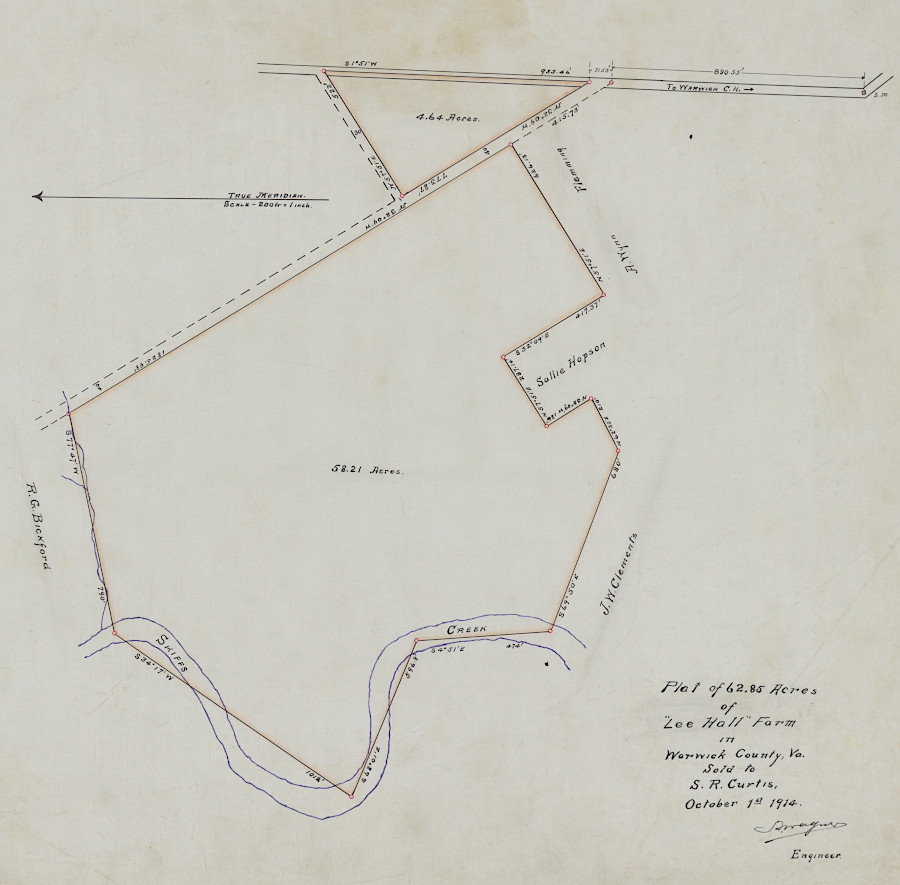
transformation of Warwick County started with the completion of the C&O Railway in 1882, and then the population boom during World War II
Source: Newport News Public Library, Lee Hall Farm in Warwick County, Virginia (Map Collection of the Old Dominion Land Company)
Creation of the Newport News Shipbuilding and Drydock Company spurred further development in the southeastern corner of Warwick County. Newport News was incorporated as an independent city in 1896, reducing both the population and the size of Warwick County. A fragment of the county was not incorporated into the city in 1896. However, additional annexations in 1917 and 1920 absorbed that fragment.
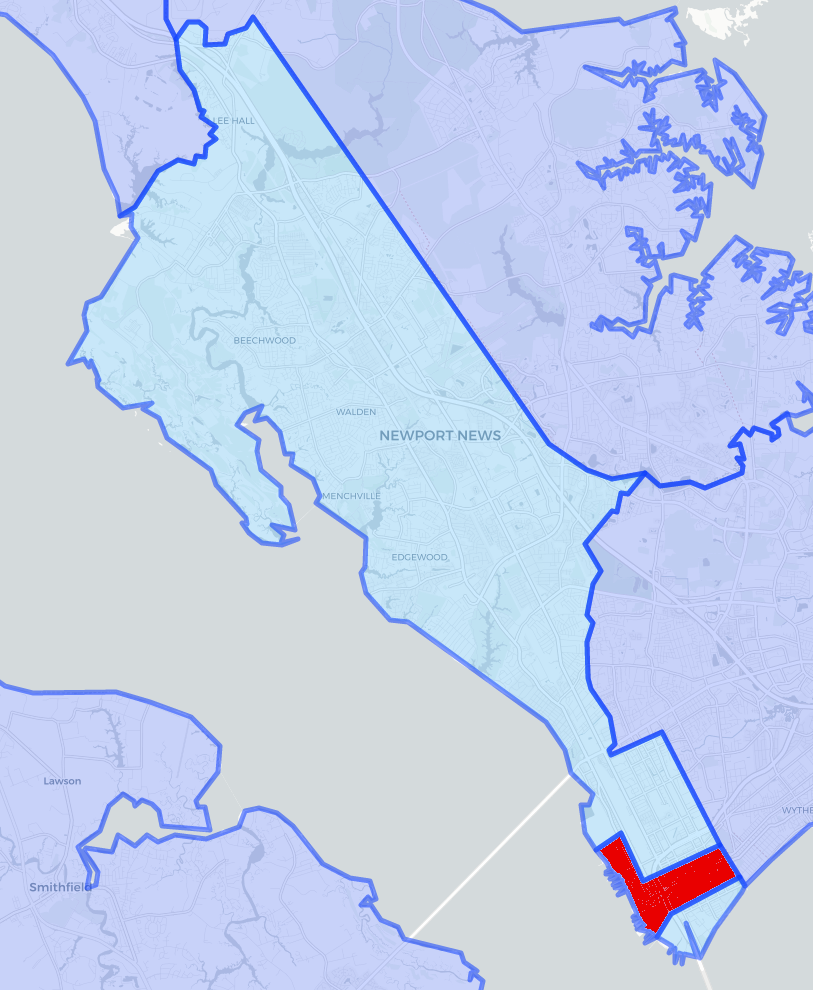
the original boundaries of the independent city of Newport News (red) left a fragment of Warwick County south of the city
Source: Newberry Library, Atlas of Historical County Boundaries
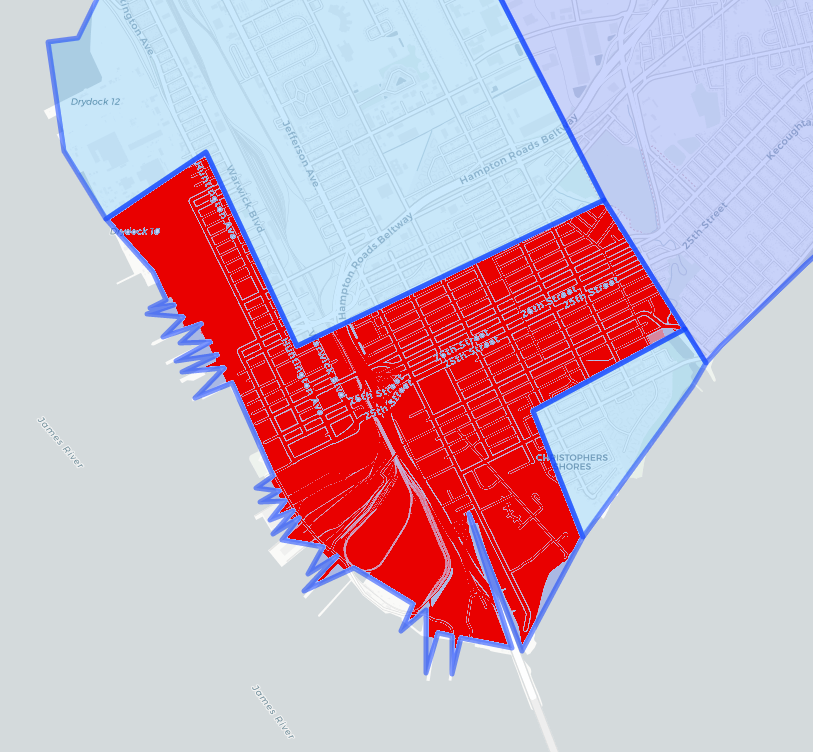
a portion of that fragment of Warwick County was annexed in 1917
Source: Newberry Library, Atlas of Historical County Boundaries
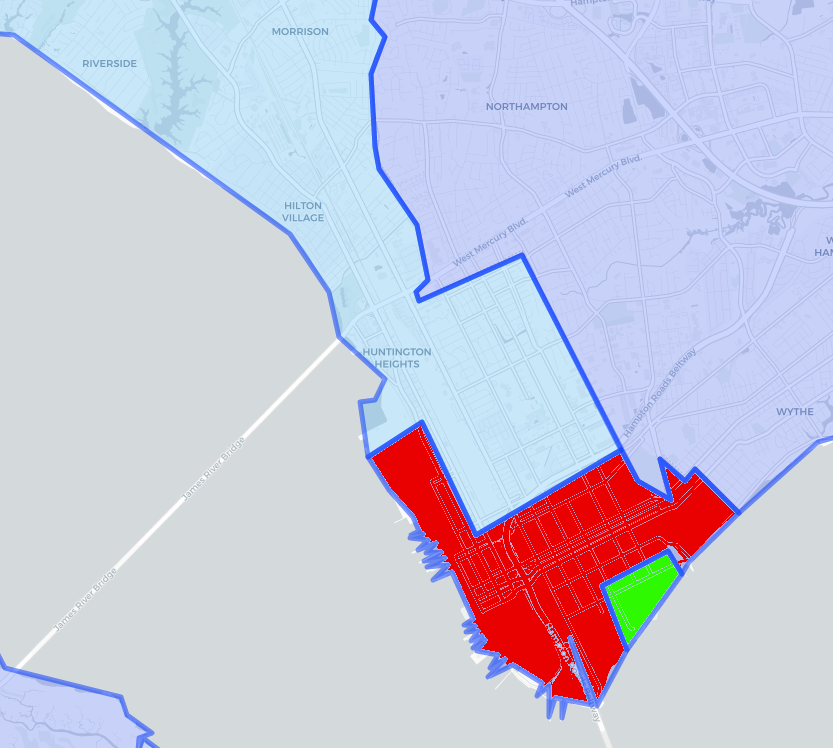
the last fragment of Warwick County on the eastern side of Newport News (green) was annexed in 1940
Source: Newberry Library, Atlas of Historical County Boundaries
At the start of World War I, Langley Field was opened in nearby Elizabeth City County and 300 barracks were constructed at Camp Stuart, helping 800,000 soldiers ultimately pass through the Hampton Roads Port of Embarkation. The United States needed to build new ships to carry supplies to Europe and replace vessels sunk by German submarines. The Newport News Shipbuilding and Drydock Company doubled its workforce, and the population of Newport News swelled from 26,246 to 47,013. The inadequate housing supply caused morale problems, and the shipyard struggled to retain skilled workers with families.
There was no space large enough within Newport News to build the new housing required to accommodate the expanding population. The United States Shipping Board and the shipyard partnered to build Hilton Village in Warwick County to house 500 families. They converted the 100-acre "Hilton" farm into a subdivision 11 blocks long and four blocks wide, with an extension of the Newport News streetcar line to facilitate commuting to the shipyard.
Hilton Village was the first of about 100 Federal housing projects to support the war effort, and it set an example of how to build a planned community. The architects consulted with wives of shipyard workers to design 14 Tudor-style house plans in order to create an English-style village in Warwick County. By building quality dwelling units and a unique sense of place rather than just temporary housing, Hilton Village was designed to become a permanent high-quality community rather than a slum of the future.
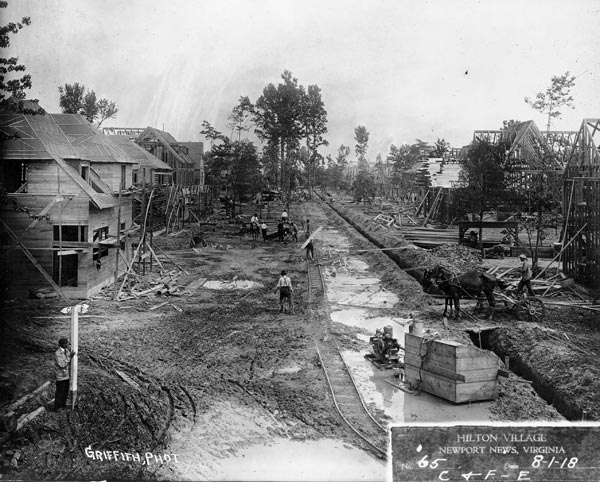
construction of Hilton Village started in April, 1918
Source: Library of Virginia, Virginia Memory, This Day in Virginia History (August 1, 1918)
Construction did not stop when World War I ended in 1918; between 1918-1920, 473 homes were completed. The United States Shipping Board sold the development to the Newport News Shipbuilding and Drydock Company in 1921. The shipyard created the Newport News Land Company subsidiary to oversee Hilton Village as a "company town," but immediately began selling the homes. Sales were slow because shipyard employment had dropped after the war contracts ended, reducing demand.3
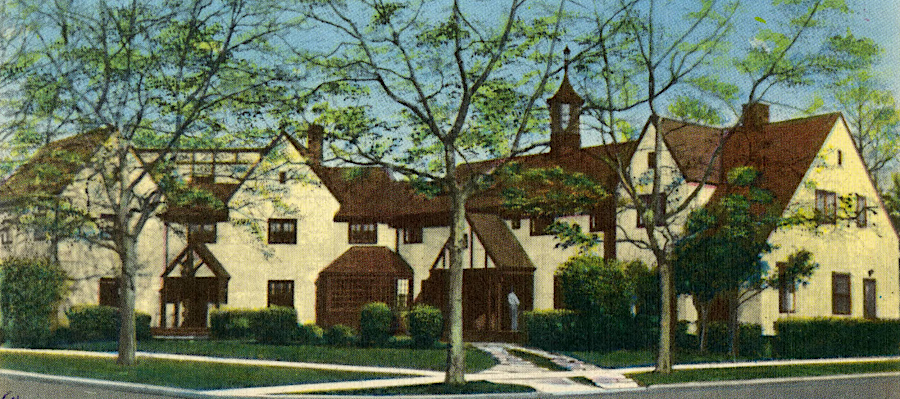
buildings in Hilton Village, including the Colony Inn built in 1927, were designed with a Tudor style
Source: Newport News Public Library, Colony Inn
Old residents complained that the costs of building new roads, schools, and other public facilities strained the finances of Warwick County. New residents, with less interest in maintaining historical political boundaries and supporting a particular jurisdiction, supported consolidation of different cities and counties on the Peninsula. Residents were asked in 1950 to support creation of the City of Hampton Road, consolidating into one city the counties of Warwick and Elizabeth City with the cities of Hampton and Newport News plus the Town of Phoebus.
After voters in Hampton rejected the proposal, Warwick County was vulnerable to annexation by the City of Newport News. The county changed its charter to become the City of Warwick in 1952. That same year, Hampton, Phoebus and Elizabeth City County merged into the City of Hampton. Unlike counties, cities were immune to any attempt by Newport News to expand its boundaries through annexation.
There was another attempt in 1956 to merge all the jurisdictions on the eastern end of the Peninsula. Voters in the cities of Warwick and Newport News supported a proposal to merge with the new City of Hampton to create one governmental unit. Hampton voters, which by 1956 included residents of what had been Elizabeth City County, again rejected the proposal to consolidate.
The independent City of Warwick lasted only until 1958. It merged with the city of Newport News, after a vote in which Newport News residents were far more supportive of merger than residents in Warwick County. In 1958, a political unit with "Warwick" in its name disappeared from the map for the first time since 1634.4
The area of the newly-enlarged City of Newport News was slightly larger than the original size of Warwick County, because Newport News had annexed the Town of Kecoughtan from Elizabeth City County in 1927.5
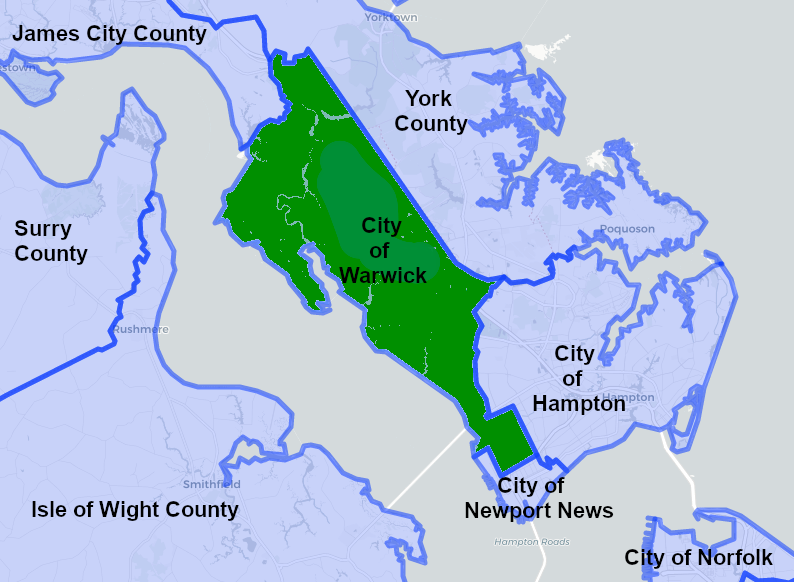
the City of Warwick lasted from 1952-1958
Source: Newberry Library, Atlas of Historical County Boundaries
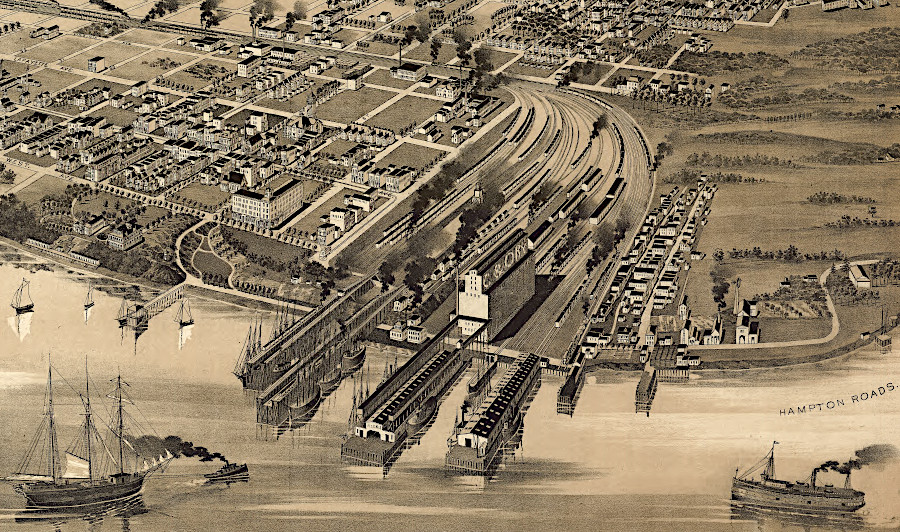
Newport News was the economic and political center of Warwick County after construction of the Chesapeake and Ohio Railway
Source: Library of Congress, Perspective map of Newport News, Va., county seat of Warwick County 1891